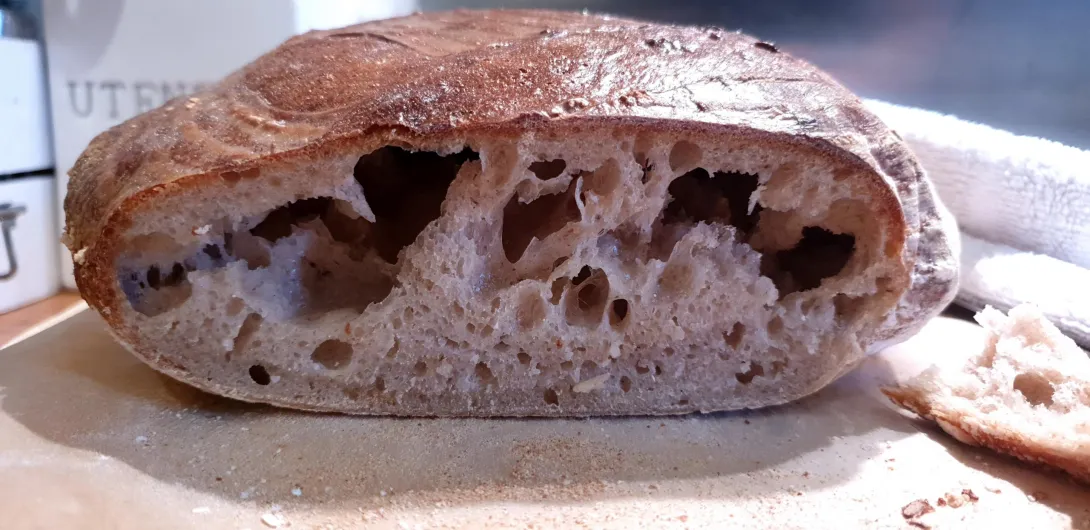Hi fellow bakers,
I recently tried my second sourdough loaf with a new starter I made but it has come out with large air holes at the top of the loaf.
The difference to my first loaf that was more dense but less air holes is my kneading technique, I tried folding 3 times in a bulk prove then proved overnight in a banneton in the fridge. Whereas, my first loaf I used my kitchenaid, any advice would be appreciated!
Image

I'm not much more than a raggedy home bread baker but I'd hazard a guess that you may want to check out your loaf shaping techniques as a place to start.
Sure you're more than that! :)
I did find it quite difficult to work with and I think I may have not folded into an envelope beforehand, could that be a possibility?
Generally speaking when you have that dense crumb at the bottom and the large holes on the top your dough was under fermented. It could have been that your starter wasn’t active enough or not long enough bulk fermentation for the temperature that you did bulk fermentation for. They would probably be the most common causes of under fermentation. I’m sure others with more experience may be more helpful than I.
Get your starter more active with more feedings. Try building your levain when the starter has just peaked and the top of the starter has just started to flatten out (rather than being convex). Try to bulk ferment at warmer temperatures, is there a spot in your kitchen that is warmer, top of the fridge, in the oven with the light on and the door kept open with a wooden spoon? Try to push bulk fermentation longer.
Benny
Benny
Thanks for your reply Benny.
Regarding the starter I'm currently having to feed twice a day and getting good rise and fall every 12 hours so I would like to think that isn't the problem.
Looking at your suggestion of bulk fermentation I'm thinking that could likely be the explanation as the temperature has changed quite dramatically here and I don't think I left it as long as I should have before popping into the fridge overnight, so I'll give that a go.
Can I just ask if you are fermenting overnight in the fridge, should you bake directly from the fridge or allow to come up to temperature?
After bulk fermentation is complete and I’ve shaped the dough and put it into a banneton, yes I place the dough into the fridge overnight for cold retard. In the morning I bake it right out of the fridge, nice and cold. The cold dough does hold its shape better and is easier to score. I believe that the cold dough also helps with oven spring from what I’ve read.
Benny